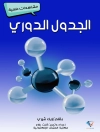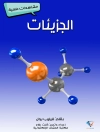Amino Acids, Peptides and Proteins comprises a comprehensive review of significant developments at this biology/chemistry interface. Each volume of this Specialist Periodical Report opens with an overview of amino acids and their applications. Work on peptides is reviewed over several chapters, ranging from current trends in their synthesis and conformational and structural analysis, to peptidomimetics and the discovery of peptide-related molecules in nature. The application of advanced techniques in structural elucidation is incorporated into all chapters, whilst periodic chapters on metal complexes of amino acids, peptides and beta-lactams extend the scope of coverage. Efficient searching of specialist topics is facilitated by the sub-division of chapters into discrete subject areas, allowing annual trends to be monitored. Researchers in the pharmaceutical and allied industries, and at the biology/chemistry interface in academia will find this an indispensable reference source. Specialist Periodical Reports provide systematic and detailed review coverage in major areas of chemical research. Compiled by teams of leading experts in their specialist fields, this series is designed to help the chemistry community keep current with the latest developments in their field. Each volume in the series is published either annually or biennially and is a superb reference point for researchers. www.rsc.org/spr
Зміст
Chapter 1: Amino Acids; 1: Introduction; 2: Reviews; 3: Naturally Occurring Amino Acids; 3.1: New Naturally Occurring Amino Acids; 4: Chemical Synthesis and Resolution of Amino Acids; 4.1: General Methods for the Synthesis of ?-Amino Acids Including Enantioselective Synthesis; 4.2: Synthesis of Protein Amino Acids and Other Naturally Occurring Amino Acids; 4.3: Synthesis of ?-Alkyl and ?-Amino Acids; 4.4: Synthesis of ?-Amino Acids with Acyclic and Long Aliphatic Side Chains; 4.5: Models for Prebiotic Synthesis of Amino Acids; 4.6: Synthesis of Halogenoalkyl ?-Amino Acids; 4.7: Synthesis of Hydroxyalkyl ?-Amino Acids; 4.8: Synthesis of N-Substituted ?-Amino Acids; 4.9: Synthesis of ?-Amino Acids carrying Unsaturated Aliphatic Side-chains; 4.10: Synthesis of ?-Amino Acids with Aromatic or Heterocyclic Side-chains; 4.11: Synthesis of ?-Amino Acids Carrying Amino Groups and Related Nitrogen Functional Groups in Aliphatic Side Chains; 4.12: Synthesis of ?-Amino Acids with Side-chains Carrying Boron Functional Groups; 4.13: Synthesis of ?-Amino Acids with Side-chain Carrying Silicon Functional Groups; 4.14: Synthesis of ?-Amino Acids with Side-chains Carrying Phosphorus Functional Groups; 4.15: Synthesis of ?-Amino Acids with Side-chains Carrying Sulfur and Selenium; 4.16: Synthesis of ?-Amino Acids with Higher Homologous Amino Acids; 4.17: Resolution of DL-Amino Acids; 5: Physico-chemical Studies of Amino Acids; 5.1: X-ray Crystal Analysis of Amino Acids and Their Derivatives; 5.2: Nuclear Magnetic Resonance Spectroscopy; 5.3: Circular Dichroism; 5.4: Mass Spectrometry; 5.5: Other Spectroscopic Studies on Amino Acids; 5.6: Measurements on Amino Acids in Solution; 5.7: Measurements on Amino Acids in the Solid State; 5.8: Amino Acids Absorption and Transport Phenomena; 5.9: Host-Guest Studies with Amino Acids; 5.10: Theoretical Calculations involving Amino Acids; 6: Reactions and Ananlysis of Amino Acids; 6.1: General and Specific Reactions of Amino Acids; 6.2: Analysis of Amino Acids; References; Chapter 2: Peptide Synthesis; 1: Introduction; 2: Methods; 2.1: Amino-group Protection; 2.2: Carboxy-group Protection; 2.3: Side-chain Protection; 2.4: Disulfide Bond Formation; 2.5: Peptide Bond Formation; 2.6: Peptide Synthesis on Macromolecular Supports and Methods of Combinatorial Synthesis; 2.7: Enzyme-mediated Synthesis and Semi-synthesis; 2.8: Miscellaneous Reactions Related to Peptide Synthesis; 3: Appendix: A List of Syntheses in 2002; 3.1: Natural Peptides, Proteins and Partial Sequences; 3.2: Sequential Oligo- and Poly-peptides; 3.3: Enzyme Substrates and Inhibitors; 3.4: Conformations of Synthetic Peptides; 3.5: Glycopeptides; 3.6: Phosphopeptides and Related Compounds; 3.7: Immunogenic and Immunosuppressant Peptides; 3.8: Nucleopeptides, PNAs; 3.9: Miscellaneous Peptides; 3.10: Purification Methods; References; Chapter 3: Analogue and Conformational Studies on Peptides, Hormones and Other Biologically Active Peptides; 1: Introduction; 2: Peptide Backbone Modifications and Peptide Mimetics; 2.1: Aza, Oxazole, Oxazoline, Triazole, Triazine and Tetrazole Peptides; 2.2: [CH=CH], [Z-CF CH], [CH(OH)-CH2], [CH(OH)-CH2-NH], retro- and retro-inverso- [NHCH(CF3)], [CH2O], retro- [CONR], [CO-N(NPht)], [O-CO-N], [CO-NR-O], [CH2NH], [CO-CH2-cyclopropyl-NH], [PO2R-N], [PO2R], [NHCO]; 2.3: Rigid Amino Acid, Peptide and Turn Mimetics; 3: Cyclic Peptides; 4: Biologically Active Peptides; 4.1: Peptides Involved in Alzheimer’s Disease; 4.2: Antimicrobial Peptides; 4.3: ACTH peptides; 4.4: Angiotensin II Analogues and Non-peptide Angiotensin II Receptor Ligands; 4.5: Bombesin/Neuromedin Analogues; 4.6: Bradykinin Analogues; 4.7: Cholecystokinin Analogues, Growth Hormone-Releasing Peptide and Analogues; 4.8: Integrin-Related Peptide and Non-Peptide Analogues; 4.9: LHRH and Gn RH Analogues; 4.10: -MSH Analogues; 4.11: MHC Class I and II Analogues; 4.12: Neuropeptide Y (NPY) Analogues; 4.13: Opioid (Neuropeptide FF, Enkephalin, Nociceptin, Deltorphin and Dynorphin) Peptides; 4.14: Somatostatin Analogues; 4.15: Tachykinin (Substance P and Neurokinin) Analogues; 4.16: Vasopressin Analogues; 4.17: Insulins and Chemokines; 4.18: Peptide Toxins; 4.19: Miscellaneous; 5: Enzyme Inhibitors; 5.1: Aminopeptidase Inhibitors; 5.2: Calpain Inhibitors; 5.3: Carboxypeptidase Inhibitors; 5.4: Caspase Inhibitors; 5.5: Cathepsin and Other Cystein-Protease Inhibitors; 5.6: Cytomegalovirus and Rhinovirus 3C Protease Inhibitors; 5.7: Converting Enzymes and Their Inhibitors; 5.8: Elastase Inhibitors; 5.9: Farnesyltransferase Inhibitors; 5.10: HIV Protease Inhibitors; 5.11: Matrix Metalloproteinase Inhibitors; 5.12: NO-Synthase Inhibitors; 5.13: Proteasome Inhibitors; 5.14: Protein Phosphatase Inhibitors; 5.15: Renin and Other Aspartyl Proteinase Inhibitors; 5.16: Thrombin and Factor Xa Inhibitors; 5.17: Trypsin and Other Serine Protease Inhibitors; 5.18: t RNA Synthetase Inhibitors; 5.19: Miscellaneous; 6: Phage Library Leads; 7: Protein-protein Interaction Inhibitors; 7.1: SH2 and SH3 Domain Ligands; 8: Advances in Formulation/Delivery Technology; References; Chapter 4: Cyclic, Modified and Conjugated Peptides; 1: Introduction; 2: Cyclic Peptides; 2.1: General Considerations; 2.2: Cyclic Dipeptides (Dioxo or Diketo-piperazines); 2.3: Cyclotripeptides; 2.4: Cyclotetrapeptides; 2.5: Cyclopentapeptides; 2.6: Cyclohexapeptides; 2.7: Cycloheptapeptides; 2.8: Cyclooctapeptides; 2.9: Cyclononapeptides; 2.10: Cyclodecapeptides; 2.11: Higher Cyclic Peptides; 2.12: Peptides Containing Thiazole/Oxazole Rings; 2.13: Cyclodepsipeptides; 3: Modified and Conjugated Peptides; 3.1: Phosphopeptides; 3.2: O-Sulfated Peptides; 3.3: Glycopeptide Antibiotics; 3.4: Glycopeptides; 3.5: Lipopeptides; 4: Miscellaneous Structures; References; Chapter 5: Metal Complexes of Amino Acids and Peptides; 1: Introduction; 2: Amino Acid Complexes; 2.1: Synthesis and Structural Studies; 2.2: Solution Studies; 2.3: Kinetic Studies; 2.4: Synthetic, Analytical and Biomedical Applications of Amino Acid Complexes; 3: Peptide Complexes; 3.1: Synthesis and Structural Studies on Peptide Complexes; 3.2: Kinetics and Reactivity; 3.3: Solution Equilibria – Metal Ion Speciation of Peptide Complexes; 3.4: Metal Complexes of Peptides Containing Histidyl and Cysteinyl Residues; 3.5: Synthetic, Analytical and Biomedical Applications of Peptide Complexes; References












